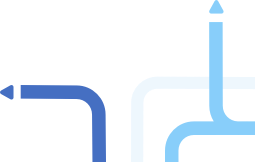Here are some useful strategies for teaching a group with deaf and hard-of-hearing students.
Please be aware that some students may not be comfortable with your suggestions, and may have alternative strategies they would like you to use. Always respect their choices.
Some useful tips for teachers
Sitting Right Up Front
Encourage students have have a clear line of vision by encouraging them to sit at the front of the class. This is particularly important if/when the student uses an interpreter, lipreading, relies on visual cues or uses hearing aids or assistive listening devices that have a limited range.
Use assistive listening devices (ALDs)
Assistive Listening Devices enable students to better access information during live and spoken lectures or sessions. Technologies available include induction loops, hearing aids, and transmitter/receiver systems with a clip-on microphone for the teacher / lecturer. Teachers do not need to change their speaking or teaching style.
Minimise background noise where possible
Extreme or excessive background noise makes it more difficult for students to concentrate leading to distractions and interruptions that impact how they receive and process information.
Clearly repeat any questions asked by students
Always do this before giving your response to the question asked.
Always face forward when speak
Do NOT speak with your back turned or when facing or writing on a black or white board.
Be aware of visual obstructions in front of the face
Moustaches, beards, hands, chewing and microphones can make it difficult to lipread and understand facial expressions.
Ensure the teaching environment has appropriate lighting
It is difficult for lip readers and signers to function in darkened rooms. If a signing interpreter is present, take their lead / feedback.
More useful tips for teachers
Provide handouts
It is difficult for students watching an interpreter to take notes. An interpreter cannot translate both the teacher’s words and information presented on an overhead (PowerPoint, video, charts, written material) at the same time. All information should be available to the students as handouts.
Provide supplementary written materials
Do this for all lectures, tutorials and laboratory sessions. This includes announcements regarding class times, activities, fieldwork and industry visits.
Caption videos and films where possible
Where not possible, consider alternative ways for deaf and hard-of-hearing students to access information. Email transcripts of live remote captioning (to be accessed within 24 hours) directly to the student as accurate records of reference.
Group Learning: Always seat students opposite to the teacher / presenter
In tutorials or group discussions, allow students to see all the other participants. Circular seating or standing group formats will support better interaction and engagement.
Take turns talking - one at a time
Moderate group discussions so that only one person is speaking at a time. Deaf and hard-of-hearing students usually find it hard to follow group conversations and this discourages equitable participation in the exchange.
Accommodate small allowances
Students with hearing loss, especially those with associated speech issues, may prefer to have another student present their papers.
Actively support advance preparation
Try to provide reading lists well before the start of the course. Hearing loss can often affect language abilities, depending on the age of onset. Students who acquire their hearing loss early in life may have literacy issues. Consider tailoring reading lists and providing guidance to key texts as required.





